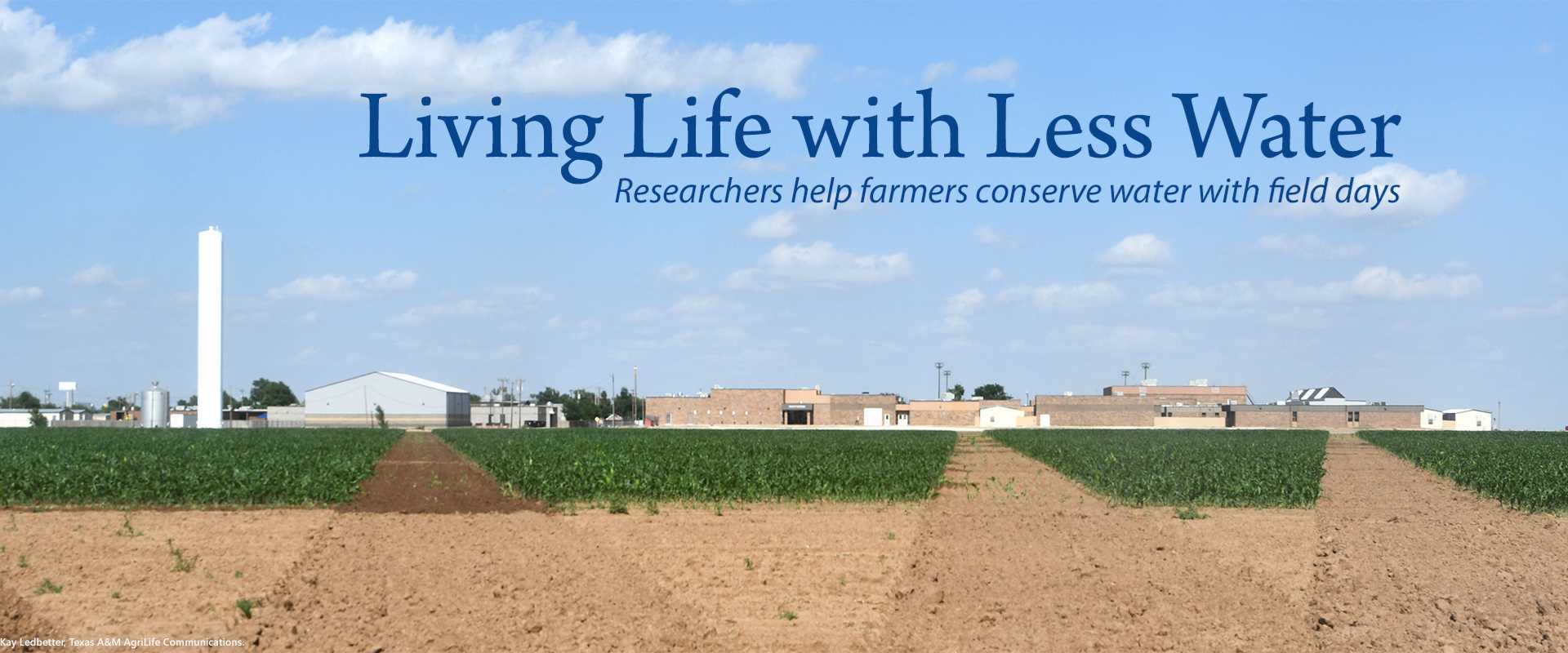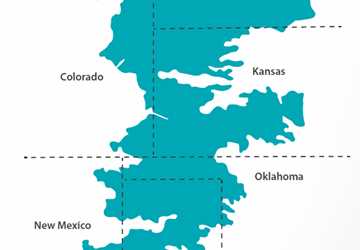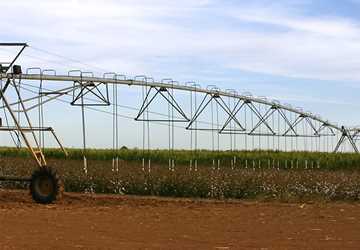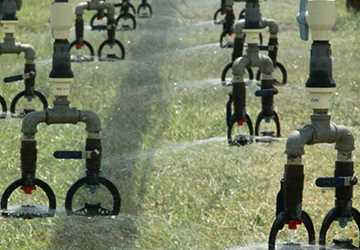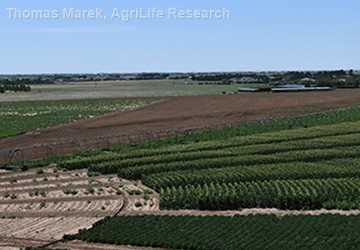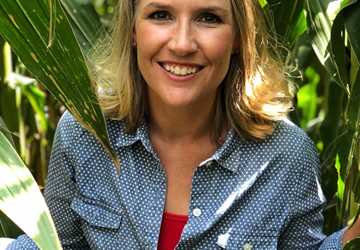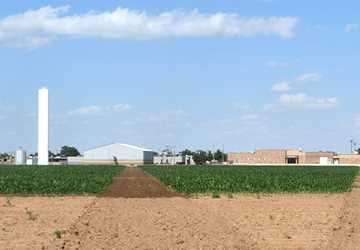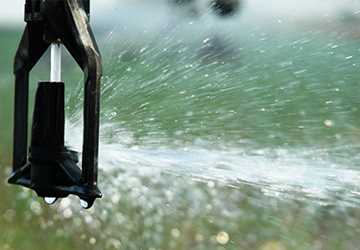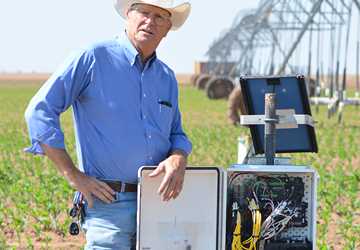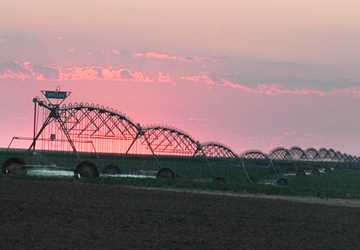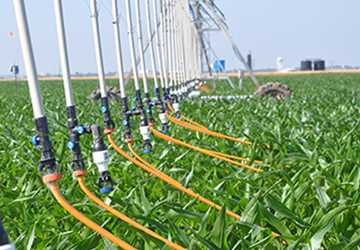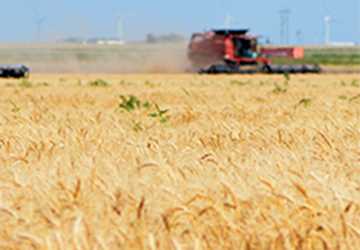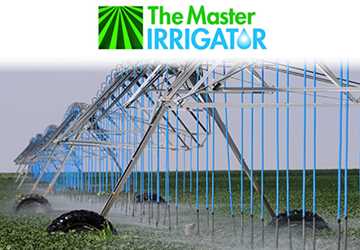If someone asked you what your biggest fear was, it probably wouldn’t be running out of water. For farmers across the Ogallala Aquifer region, this fear could become reality within the next 30 years.
The aquifer’s decline has had a big impact on producers in the Ogallala region, especially for Barry Evans, a cotton and grain sorghum farmer in Kress, Texas in the Texas Panhandle.
Field days, social media and other outreach efforts help producers optimize water use across the Ogallala region.
“I started farming in 1992, and when I first began, I was 100 percent irrigated, and now I am 16 percent irrigated and 84 percent dryland, so it’s been drastic for me,” Evans said. “It’s been a complete change of mindset, a total change in the way we do things.”
This new mindset has been a necessary solution when irrigating with water from a declining aquifer. “My hope is that we can use the aquifer to the best of our ability and that we don’t waste it,” Evans said. “There is no doubt that conserving water is important for future generations.”
Evans and other producers rely on outreach programs such as the Texas Alliance for Water Conservation (TAWC) to know how much and where to water their crops. Based at Texas Tech University and funded by a grant from the Texas Water Development Board, TAWC is a partnership of producers, technology firms, universities and government agencies working to extend the life of the Ogallala Aquifer, the largest aquifer in the United States.
“Their research is a data collection that tells us where our maximum water-use efficiency is,” Evans said. “From field days, I’ve learned where the best place is to apply my water and how much to concentrate it. The information they put together is extremely beneficial.”
My hope is that we can use the aquifer to the best of our ability and that we don’t waste it. There is no doubt that conserving water is important for future generations.
Having a field day
TAWC organizes field days in the Lubbock area. These field days are an opportunity for farmers, consultants and scientists to gather and transfer information on water-saving methods.
Dr. Chuck West, professor in the Department of Plant and Soil Science at Texas Tech and TAWC project administrator, said field days are a traditional way for researchers and producers to communicate.
“During field days 50 years ago, we had a hay ride pull producers around to different stops on a research farm and each stop would have a professor showing side-by-side comparisons of crops with data,” he said. “We still do that, but now we are diversifying the kinds of presentations.
“It’s not just researchers who are showing off their results; we have producers who have actually tried these things saying, ‘This is what I’ve tried in the field and here is what actually works,’ and representatives from companies that manufacture and install irrigation technologies and crop consultants that help producers keep up with trends and data,” he said.
West said TAWC hosts a field day in the summer and a water college in the winter where consultants, researchers, producers and climatologists speak. Other TAWC outreach methods include social media and its website with fact sheets and video interviews from these events.
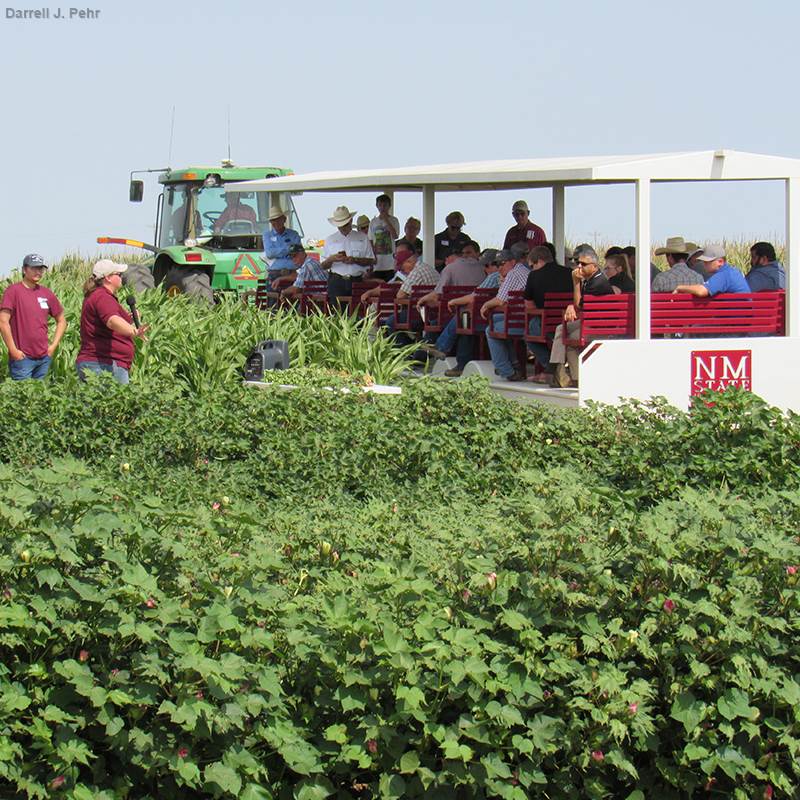
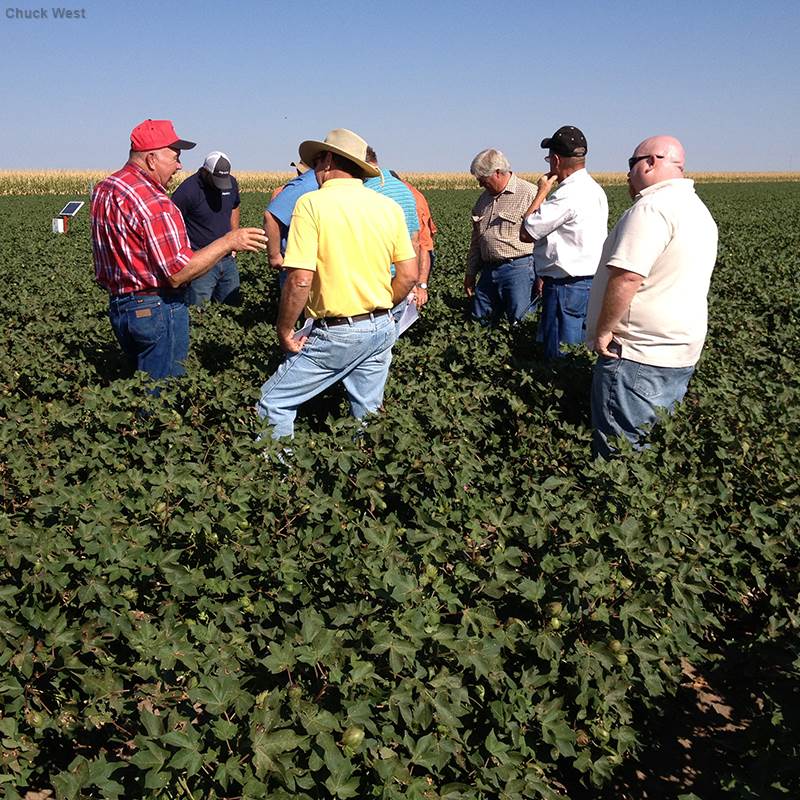
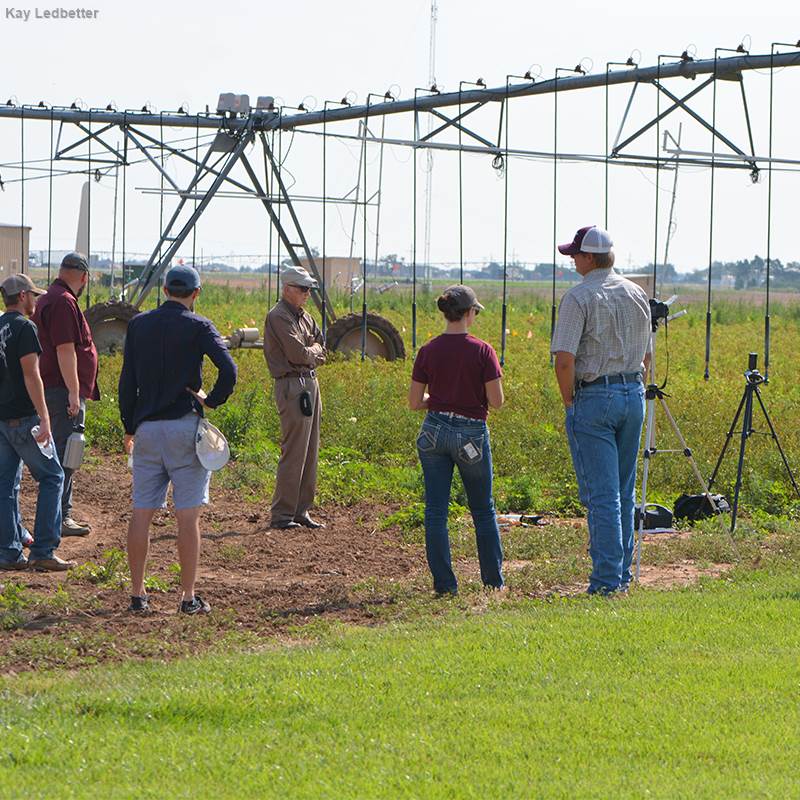
Dr. Dana Porter, Texas A&M AgriLife Extension Service agricultural engineer at the Texas A&M AgriLife Research and Extension Center at Lubbock, said field days offer producers social and educational opportunities.
“With new irrigation technologies and strategies, seeing is believing and field days continue to be a valid way to connect with producers,” Porter said.
Porter said field days and other informal meetings foster communication between producers, agribusiness, researchers and educators. “Sharing stories of what works and what doesn’t work, asking questions, expressing concerns and offering suggestions help us all address issues more comprehensively,” she said.
“Researchers gain a better understanding of what is happening and what is needed in the field so they can do a better job of finding solutions. Producers can get clarification and context to help them realize greater benefits from technologies or even help them to decide whether a given tool or strategy makes sense for their operation.”
Rethinking communication methods
With resources more available than ever, the internet has caused an evolution in communication preferences.
Dr. Brent Auvermann, professor of agricultural engineering and center director at Texas A&M AgriLife Research and Extension Center in Amarillo, said as a result, researchers are squeezing more valuable information into shorter presentations at field days.
“We are having to retrain ourselves away from the 20-30 minute presentations,” he said. “Producers don’t have as much time, so you’ve got to get to the point and get to it quickly.”
His philosophy on communication is that more in-person interaction is needed, not less.
“It’s easy for us to hide behind a computer screen, but we have to humanize agriculture again,” he said. “On crop production and water-related things, we rely heavily on the field days, but we are rethinking them from the ground up.”
With new irrigation technologies and strategies, seeing is believing and field days continue to be a valid way to connect with producers.
Auvermann said researchers and extension specialists are not just reaching out to producers anymore but are also reaching out to the consumer.
“We’ve got to re-establish the linkage between the consumer and the water that we are pumping in agriculture, which provides what the consumer is buying at the grocery store,” he said.
“We are one of the biggest Texas A&M AgriLife Research and Extension centers in the state, and it’s easy for us to get so busy that we feel like we don’t have time for our neighbors right across the boundary of our property,” Auvermann said. “We really have to take that seriously about remaining engaged in a personal way with our neighbors. It has proven to be quite an exciting challenge to modernize our outreach.”
With new irrigation technologies and strategies, seeing is believing and field days continue to be a valid way to connect with producers.
Dr. Dana PorterWhen problem-solving, Auvermann said it is important to dialogue in a way that is more collaborative and less one-way in the communications process. “You’re collaborating but you’re also asking good questions and listening closely at the same time where you give and take to figure out what works best overall,” he said.
Producers these days have bigger land areas and are technologically savvy.
“They have higher expectations of us, and they have other options for their agricultural education, so we are in a highly competitive educational marketplace and we have to adapt to that,” Auvermann said.
Dr. Jonathan Aguilar, assistant professor in biological and agricultural engineering at Kansas State University, reaches out to producers in Kansas through Water Technology Farms, which are demonstration farms that allow the installation and testing of the latest irrigation technologies on a whole-field scale.
We’ve got to re-establish the linkage between the consumer and the water that we are pumping in agriculture, which provides what the consumer is buying at the grocery store.
“The technology farms have been a good partnership between the industry, producers, research and extension in terms of sharing data,” he said, adding that the technology farms successfully encourage peer-to-peer education among the producers.
Aguilar said when farmers are asked how to conserve water, they have multiple perceptions on how to address the issue. “It is not just researchers or extension people that are talking to producers, it is also their peers talking about how they perceive some of the technologies that they are trying.”
Operation collaboration
In addition to field days, researchers arrange field walks to collaborate with producers, comparing the progress of crops throughout the growing season. West said a field walk is like an informal field day on a local farm.
“We spend two hours talking about how the producer is managing a crop while implementing one of our recommended procedures,” West said. “We might visit the same field two to three times throughout the summer so the visitors can see how the crop has progressed.”
In Nebraska, other methods of collaboration include the Testing Ag Performance Solutions (TAPS) program, co-developed by University of Nebraska-Lincoln’s Dr. Daran Rudnick, assistant professor and irrigation management specialist; and Dr. Matt Stockton and Chuck Burr, both research and extension specialists and educators.
We interact with people from other states and from other universities to contribute all of our skills together so all of the states within the Ogallala Aquifer can benefit from each other.
“The TAPS program engages producers, industry, university and government entities through a farm management competition, where participants compete for the most profitable farm and highest input-use efficiency,” Rudnick said. “These competitions let farmers test out new and developing technologies, tools and methods without buying them first and taking a risk on their own farm.”
“It’s all terribly interesting and important work we’re doing and I love this job. I’m thrilled to be part of the scene where agriculture is so important.”
Explore this Issue
Authors
As a communications specialist for TWRI, Sarah Dormire works with the institute's communications team leading graphic design projects including TWRI News, flyers, brochures, reports, documents and other educational materials.

